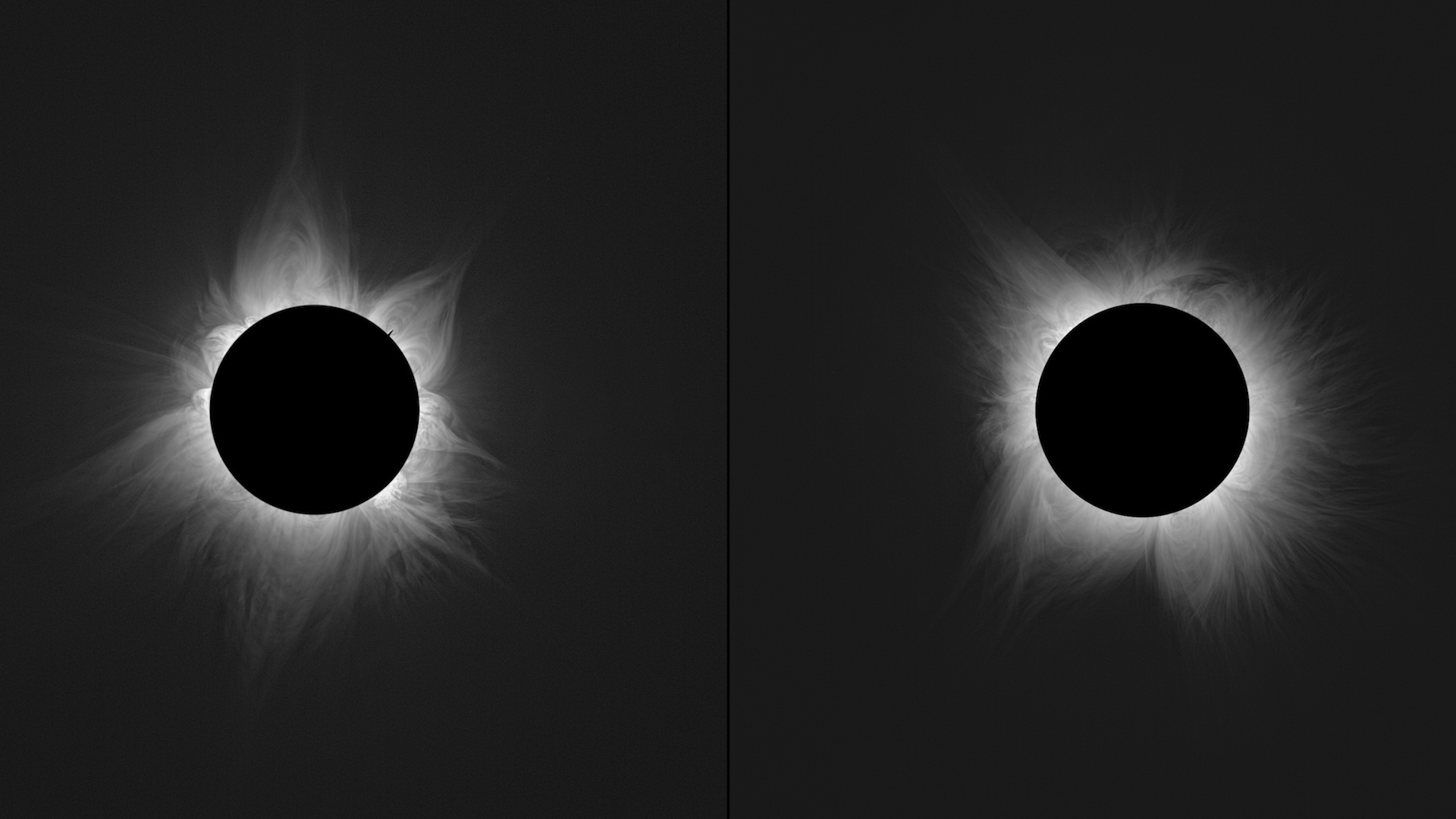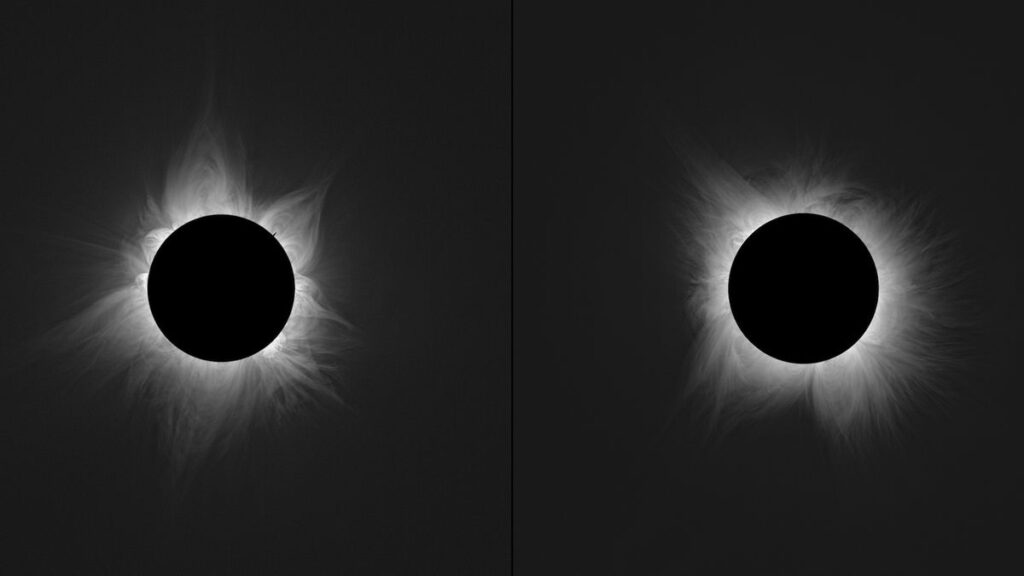
What it is: The sun’s corona
Where it is: About 93 million miles (150 million kilometers) from Earth
When it was shared: Dec. 10, 2024
Why it’s so special: This stunning image shows the sun’s corona during two total solar eclipses — on April 20, 2023, and April 8, 2024. The photo, snapped by a team of eclipse-chasing astrophotographers known as the Solar Wind Sherpas, is significant because it shows the sun during solar maximum, the peak in its roughly 11-year cycle, scientists explained at a Dec. 13 news conference at the American Geophysical Union’s annual meeting in Washington, D.C.
The sun’s magnetic activity waxes and wanes over 11 years. The current solar cycle began in 2019 with solar minimum and reached solar maximum in mid-October. Scientists count the number of sunspots — cooler solar regions that are caused by a concentration of magnetic-field lines — to determine and predict the progress of the solar cycle. However, some solar science can be performed only during a total solar eclipse.
Related: Eclipse from space: See the moon’s shadow race across North America at 1,500 mph in epic satellite footage
The sun’s corona is the hottest and outermost layer of the star’s atmosphere; it extends millions of miles into space. However, its intricate structures are overwhelmed by the sun’s photosphere — its bright surface — and can be seen from Earth only during the totality phase of a total solar eclipse, when the sun is completely blocked by the moon from our perspective on Earth.
The image shows the combined results of images of the corona taken during two separate totalities and in multiple wavelengths. The photos show how, even though the sun was close to solar maximum during both eclipses, its magnetic field shaped the sun’s corona differently during each eclipse. The images contain information about the corona’s temperature and are vital for solar physicists’ attempts to understand the corona and why it’s so much hotter than the photosphere.
The photos that make up the two composite images were taken from heady heights. In addition to being snapped by cameras attached to telescopes, the photos were taken by spectral imaging cameras mounted on a kite in Western Australia (for the April 2023 eclipse) and on the NASA WB-57 research aircraft flying out of Houston (for the April 2024 eclipse).
For more sublime space images, check out our Space Photo of the Week archives.
